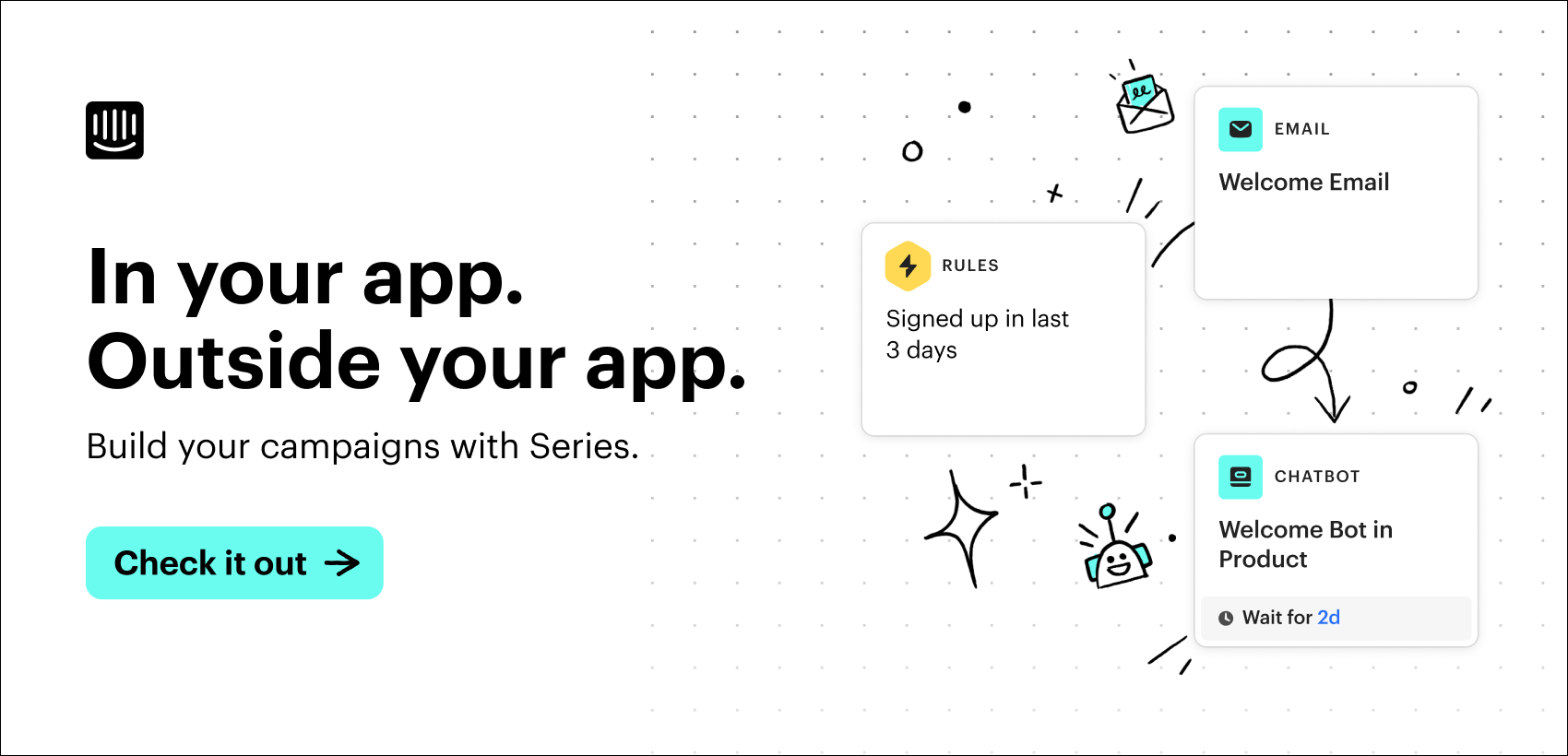
Reduce churn by re-engaging your customers
Main illustration: Seth Lunsford
Churn is one of the most important metrics tracked by today’s startups. But also one of the most misunderstood.
We’re on the receiving end of this confusion as Intercom is a product that actually reduces churn. People will read one of our case studies and ask us how to get similar results, but the first step is always to clarify what churn looks like in your business, and then make plans to address it.
How to understand churn properly
When startups talk about percentage churn they ignore too many variables. If you ask me if 5% user churn is bad, I can’t answer easily. I’ve many questions to run through:
- Does this include users who signed up during this month, or only lost customers from the previous month? In short, if we started with 100 customers, gained 30 signups and finished the month with 110 customers, what churn rate would you ascribe?
- What is the revenue churn vs user churn? 5% is okay if it’s all free users you’re losing, but what if that 5% happened to be all your premium customers, or 50% of your revenue? Do you want a large number of small paying users or a small number of large ones?
- What is your activity churn? How many users became inactive this month? This is your leading indicator of future churn, and usually the most actionable insight.
As you’d guess, these questions keep coming until we get some real insight. As with most SaaS metrics, when you aggregate you lose substantial clarity. The big picture contains many small stories that you need to understand.
Activity churn is what matters

Activity churn is the best indicator of future problems. Typical churn stats use something like account cancellations as a measurement but cancellation is only ever a trailing indicator, it’s literally the last thing that happens.
Customers don’t make a snap decision to stop using a product unless things have really gone wrong. Typically customers gradually stop using products, from using it every morning to every week to once a month. For example, if you were to change from Asana to Trello, you wouldn’t do so in a day. There would be many months of overlap, where both accounts are still active, but there would be gradual decrease in Asana activity as each new project is created in Trello.
At some point down the road you’ll remember you’re paying for something you don’t need and don’t use, and then you ‘churn’, even though the decision was made months ago. At this point you’re unrecoverable, but it’s the first time that Asana might notice.
Identifying and reducing activity churn

The most effective time to address churn is when you see a drop in usage across an entire team. This is where many auto-mailers get it wrong, spitting back “We miss you, please come back” emails to users who simply took a week vacation. For most SaaS apps it’s acceptable for a user from a team to disappear; it’s when the activity of an entire team is dropping that you worry you’re losing a customer. (Sidenote: This is why Intercom groups users by company.)
When you identify previously active customers who are slipping, a well-timed personal email can help to re-engage them. The best case is that you recover a customer; the worst case is you learn why you users leave. Either of these leaves you in a better position than doing nothing.
Strategies for re-engaging customers
The single best way you can engage customers that are slipping away is by talking with them. Here’s a few techniques to bear in mind before you hit send.
1. Target the right customers
There is a difference between someone who didn’t convert after a 30-day trial and a year-long user who has started to slip away. The difference results in two different jobs, conversion and recovery. Don’t let them both fall into a naive “we miss you” bucket. Treat them differently.
2. Be personal
Don’t auto-mail a customer who has several open support issues to remind them to login and don’t begin your mail with “Dear Customer”. Such activities do more harm than good. Introduce yourself in the email, and make it clear that you’re a real person who really wants to hear what they have to say about your application.
3. Be interesting, not cute
Customers don’t forget to use your product, they lose interest in it. So you have to motivate them. There are some features that will bring customers back, or keep them from switching. By offering churning customers a glimpse of what’s coming down the line, you can excite them about future releases. Things that inspire people to stick around are usually features which save time (e.g. better importing), increase adoption or efficiency (e.g. integrating with third parties), or offer additional value for no extra work (e.g. weekly reports).
If you have long standing problems that are well known (for example: performance, accuracy, limitations, etc.) it’s tempting to say they’ll be addressed, but the chances are you have been saying this for months if not years. In this case if you can’t make a concrete promise then it’s better to say nothing, and focus your efforts on resolving the problem at hand.
4. Be visual
If you have new features coming down the line, screenshots or gifs can be particularly interesting for long standing users. If the improvements are in terms of workflow, sometimes a clear diagram will be seen and understood far better than paragraphs of text. Never forget you’re just one of many emails in the inbox, and they’re all making promises. Any effort that makes your email stand out will help.
5. Be thankful, honest, and respectful
Some amount of churn is natural. Businesses come and go, as does demand for your product. When a customer decides to leave, make sure they leave on good terms. If they have legitimate problems with your product, acknowledge them. Don’t delude yourself and fight back. Thank them for their custom and let them go. The easiest way to screw this up is to continue to spam them months or years into their departure. It does more harm than good.
The single best way you can engage customers that are slipping away is by talking with them.
How churn impacts your business
A post by Tomasz Tunguz reveals some interesting data points on churn (though be warned: your mileage is guaranteed to vary). The point is that smaller customers have higher churn rates. So, if you’re a SMB, you could expect an annual churn rate of anything from 31-58%. As startups acquire more customers and target the enterprise market, churn falls to a more respectable 6-10%.
This isn’t too shocking. In early days companies are still finding their customers and will inevitably attract the wrong customers for whom their product isn’t a good fit, hence churn should decrease for startups as their product and brand becomes more focused and mature.
Yet it’s difficult for startups to assess the real impact of churn as they lack the longitudinal data. Churn is usually seen as a factor limiting growth, but the impact on customer lifetime value (LTV) is equally significant. The SaaS business model assumes a lower spend per month with many months revenue.
If churn is significant, then LTV is too low to support a SaaS model. This is common for products that have immediate upfront value, but give no reason to stick around months later. In these cases, you can spam customers all day long but you’ll see a better return from rethinking your business model.
Recurring usage = recurring value = recurring revenue
Occasional usage = occasional value = occasional revenueDon’t mix & match.
— Des Traynor (@destraynor) September 21, 2016
Even with strong revenue growth month to month churn can still be a killer, albeit a more silent one. In a presentation last year, our series A investor Mamoon Hamid highlighted this exact point, showcasing a company that he passed on simply due to its churn.
As always, if analyzing churn, cohorts, or lifetime value gives you results that you didn’t expect or can’t explain, then you should be talking with your customers more often to work out what’s going right and wrong. These days you can automate and visualise almost anything, except caring. That has to come from you.
If you’d like to learn more strategies about engaging customers we’ve written extensively on this topic in our free book on customer engagement.








